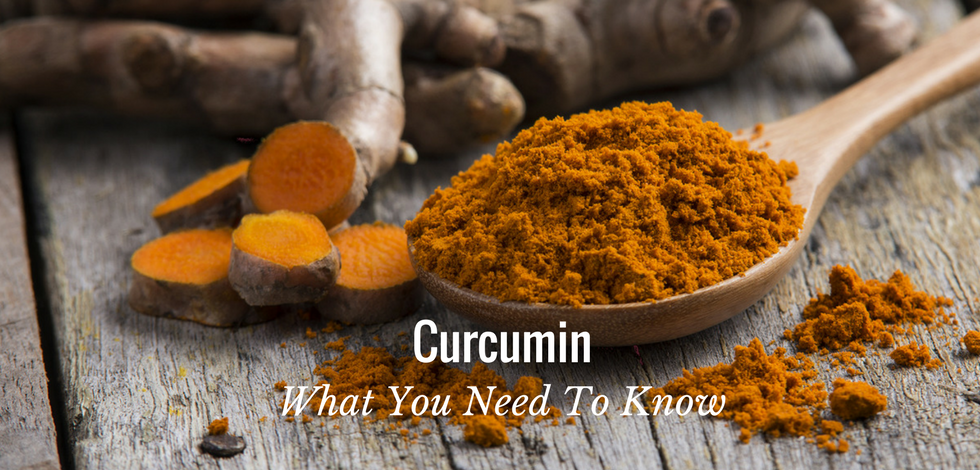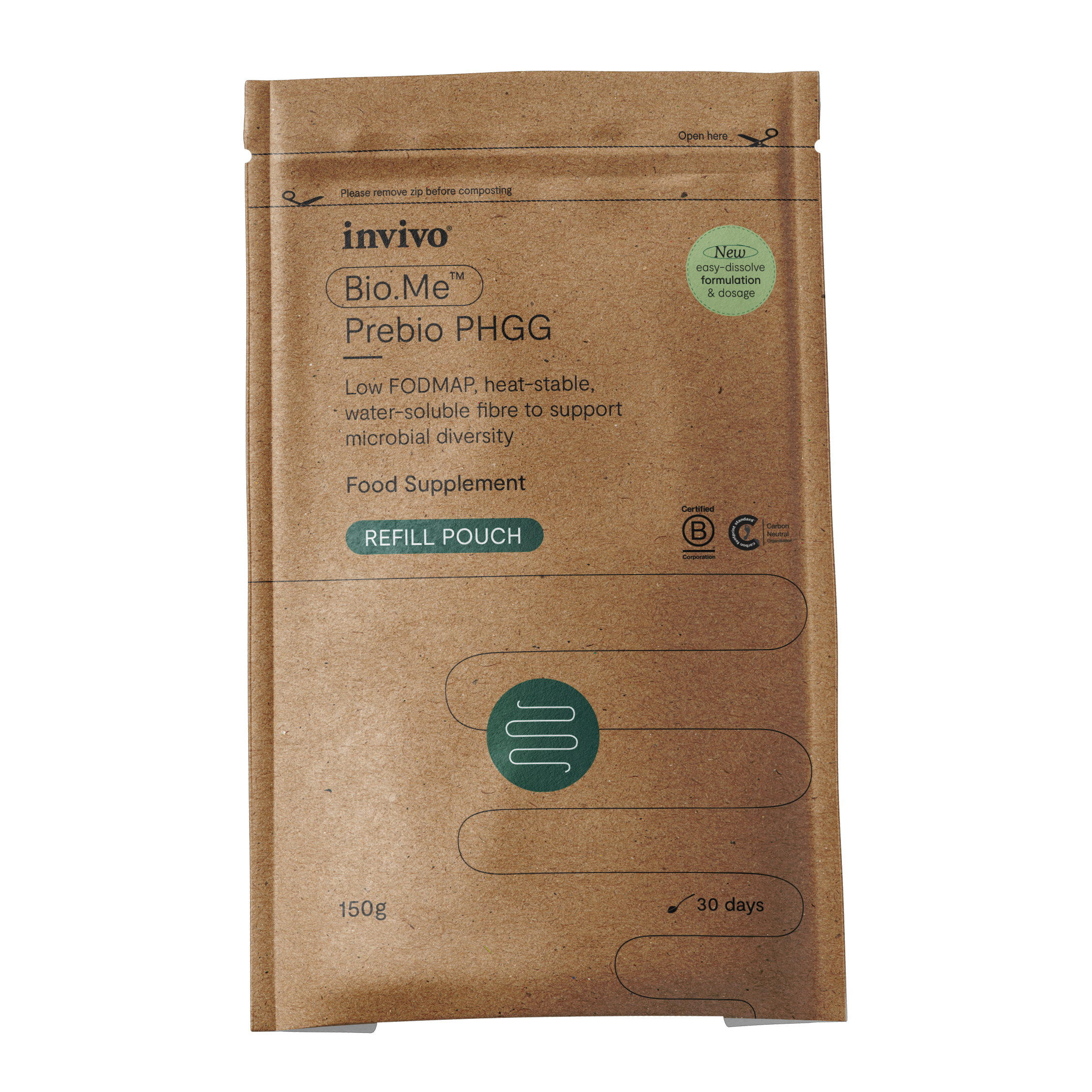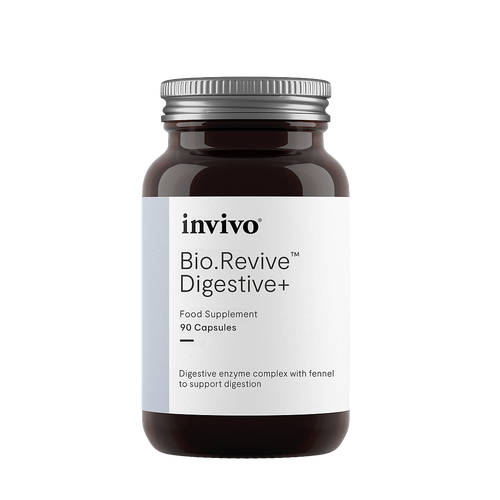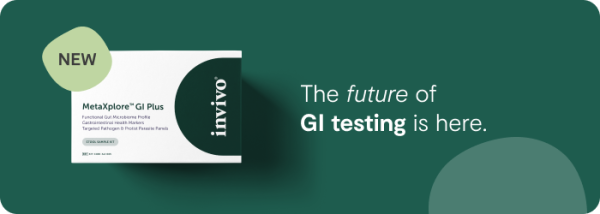Curcumin What You Need To Know
INFORMATION IS FOR PROFESSIONAL USE ONLY.Educational information only. Not intended as a replacement for medical advice that is based on individual circumstances.

IMMUNE SYSTEM REGULATION
• Inflammation (12) – injury, postoperative (56). joint wear and tear (osteoarthritis) (60)
• Allergic reactions – asthma (9)
• Autoimmune activity reduction (19, 32) – rheumatoid arthritis and multiplesclerosis in animals
• NK cell activity increase (6)
• Anti-cancer properties – breast (23), prostate (39), colon (32), pancreatic (29), glioma (33), ovarian (53)
ANTIMICROBIAL
• Antiviral (10), Epstein Barr (6) and HIV virus (26, 27)
• Antibacterial, antiparasitic (4)
TOXIC METAL CHELATOR
• Effective chelator of copper and iron (57)
GI PROTECTION & HEALING
• Stomach ulcer, Crohn’s or proctitis (9)
ANTIOXIDANT (31)
CARDIOVASCULAR PROTECTION
• Reduces cholesterol oxidation andlevels, increases HDL (30)
• Reduces fibrinogen (38)
• Reduces platelet aggregation (22, 41)
BRAIN PROTECTION
• Reduces brain damage following ischemia (reduced blood flow) (51)#
• Reduces development andregression of Alzeimer’s disease progression in animal models (50)
• Reduces gliomas (brain tumors) (33)
• Antidepressant effects (20)
LIVER PROTECTION
• from alcohol and aflatoxin (peanut fungus) (58, 59)
BILE SUPPORT
• Enhances bile flow and solubility (43)
Curcumin & The Inflammatory Response
Excessive inflammation is a common risk factor for disease occurrence and progression. Inflammation may lead to joint
tissue destruction, cancer, cardiovascular events, insulin resistance/diabetes and brain/liver/kidney degenerative diseases.
Research shows curcumin helps support a healthy inflammatory response (12). It was shown to reduce both acute and
chronic inflammation caused by physical injury, joint wear and tear (as in osteoarthritis), chronic infections or inadequate
antioxidant protection (5-8, 12, 18, 19, 22, 60).
Curcumin was shown to be more effective than certain NSAIDs in reducing inflammation and pain associated with
rheumatoid arthritis (19) or post-operative trauma (56). It has a better cardiovascular safety profile than aspirin because, unlike
aspirin, it does not inhibit the arterial protective factor prostacyclin (22). Curcumin acts on the mother compound NF Kappa
beta. By suppressing this inflammatory marker, curcumin has a domino effect that reduces the entire cascade of
inflammatory compounds that would be produced thereafter.
Curcumin has an advantage over pharmacological anti-inflammatory
agents because it is a powerful antioxidant, so it can also reduce COX
expression along with being a COX 1 and COX 2 inhibitor. Where
NSAIDs are known to have potential GI side effects such as GI bleeding,
one study showed that curcumin was able to heal GI injury caused by
the NSAID indomethacin (8). Amazingly, curcumin and resveratrol have
been proven to be even stronger anti-inflammatories than ibuprofen and
aspirin (7).
Allergies and Histamine Release
Curcumin has been shown to decrease histamine release, suggesting
that it plays a significant role in exerting both antioxidative and antiallergic
activities (9). Research shows that curcumin’s potential beneficial
effect on the allergic response works by inhibiting the production of
cytokines affecting eosinophil function and IgE synthesis (10).
Autoimmune Conditions
Curcumin downregulates mediators characteristic of rheumatoid
arthritis (19), reduces disease activity in Crohn’s (13), and was shown to
reduce disease activity in a model of multiple sclerosis in animals (32).
“These findings highlight the fact that curcumin inhibits experimental
encephalomyelitis by blocking IL-12 signaling in T cells and suggest its
use in the treatment of MS and other Th1 cell-mediated inflammatory
diseases.” (32).
By boosting NK cell activity increase (6) curcumin may also enhance the
body’s ability to fight infections.
Gastrointestinal Protection
Curcumin may benefit ulcer, proctitis (inflammation of the rectum common in ulcerative colitis and Crohn’s disease) and may reduce leaky gut syndrome.
“We conclude that antiulcer activity of curcumin is primarily attributed to matrix metalloproteinases -9 inhibition, one of the major path-ways of ulcer healing.” (8). “A pure curcumin preparation was administered in an open label study to five patients with ulcerative proctitis and five with Crohn’s disease. All proctitis patients improved, with reductions in concomitant medications in four, and four of five Crohn’s disease patients had lowered CDAI scores and sedimentation rates.” (13).
Liver Protection
Curcumin pretreatment was shown to reduce the liver damage induced by alcohol (58) and aflatoxin (59) (the fungal toxin often found along with peanuts/peanut butter).
Cardiovascular Protection
Curcumin may lower total cholesterol, fibrinogen and platelet aggregation, while increasing HDL and decreasing lipid peroxidation (30, 38, 22, 41).
In one study, “The effect of curcumin administration in reducing the serum levels of cholesterol and lipid peroxides was studied in ten healthy human volunteers, receiving 500 mg of curcumin per day for 7 days. A significant decrease in the level of serum lipid peroxides (33%), increase in HDL Cholesterol (29%), and a decrease in total serum cholesterol (11.63%) were noted.” (30). According to another study, “Our reviewed data show that, in human healthy subjects, the daily intake of 200 mg of the above extract results in a decrease in total blood lipid peroxides as well as in HDL and LDL-lipid peroxidation. This anti-atherogenic effect was accompanied by a curcuma antioxidant-induced normalization of the plasma levels of fibrinogen and of the apo B/apo A ratio, that may also decrease the cardiovascular risk.” (38).
Brain Protection
Curcumin pretreatment reduced brain damage following ischemia/stroke (51) and from heavy alcohol intake (54). Curcumin reduced development and severity of Alzeimer’s disease in animal models by reducing plaque aggregation and plaque induced oxidative stress and was even capable of dissociating existing plaque (21). Its chelating ability for iron and copper ions is also believed to play a beneficial role in reducing the progression of the disease (57).
“Initially, we reported the impact of non-steroidal anti-inflammatory drugs (NSAIDs), notably ibuprofen, which reduced amyloid accumulation, but suppressed few inflammatory markers and without reducing oxidative damage. Safety concerns with chronic NSAIDs led to a screen of alternative NSAIDs and identification of the phenolic anti-inflammatory/anti-oxidant compound curcumin, the yellow pigment in turmeric that we found targeted multiple AD pathogenic cascades. The dietary omega-3 fatty acid, docosahexaenoic acid (DHA), also limited amyloid, oxidative damage and synaptic and cognitive deficits in a transgenic mouse model. Both DHA and curcumin have favorable safety profiles, epidemiology and efficacy, and may exert general anti-aging benefits (anti-cancer and cardioprotective.)” (50).
Additional Research
There are many studies on curcumin and cancer. Curcumin has been shown to enhance chemotherapy effectiveness (52). Curcumin was the highlight of human clinical trials performed at the M.D. Anderson Cancer Institute in Houston, Texas.
“In addition to antioxidation, curcumin could also induce apoptosis by targeting mitochondria, affecting p53-related signaling and blocking NF-kappaB activation. To further dissect its anti-carcinogenic mechanisms, a number of curcumin targets were identified. These included the arylhydrocarbon receptor, cytochrome P450, glutathione S-transferase, serine/threonine kinases, transcription factors, cyclooxygenase, ornithine decarboxylase, nitric oxide synthase, matrix metalloproteinases and tyrosine kinases.” (44).
Many spices protect the body from bacteria and parasites in food, while boosting the body’s antioxidant abilities. Research shows curcumin to have antimicrobial activities. Curcumin was shown to reduce transcription of Epstein Barr (25) and HIV virus (26, 27). Curcumin may work to inhibit the growth of Staphylococcus aureus, Staphylococcus albus, and Bacillustyphosus, and is also effective against nematode parasites and certain protozoa (4).
These statements have not been evaluated by the Food and Drug Administration. These products are not intended to diagnose, treat, cure or prevent any disease.
References
1. Jäger R, Lowery RP, Calvanese AV, Joy JM, Purpura M, Wilson JM. Comparative absorption of curcumin formulations. Nutrition Journal. 2014;13:11.2. Osawa T, Sugiyama Y, Inayoshi M, Kawakishi S. Antioxidative activity of tetrahydrocurcuminoids. Biosci Biotechnol Biochem. 1995 Sep;59(9):1609-12.3. Lai CS, Wu JC, Yu SF, Badmaev V, Nagabhushanam K, Ho CT, Pan MH. Tetrahydrocurcumin is more effective than curcumin in preventing azoxymethane-induced colon carcinogenesis. Mol NutrFood Res. 2011 Dec;55(12):1819-28.4. Okada K, Wangpoengtrakul C, Tanaka T, Toyokuni S, Uchida K, Osawa T. Curcumin and especially tetrahydrocurcumin ameliorate oxidative stress-induced renal injury in mice. J Nutr. 2001Aug;131(8):2090-5.5. Araujo CC, Leon LL.Biological activities of Curcuma longa L. Mem Inst Oswaldo Cruz. 2001 Jul;96(5):723-8.6. Yadav VS, Mishra KP, Immunomodulatory effects of curcumin. Immunopharmacol Immunotoxicol. 2005;27(3):485-97.7. Takada Y, Bhardwaj A. Nonsteroidal anti-inflammatory agents differ in their ability to suppress NF-kappaB activation, inhibition of expression of cyclooxygenase-2 and cyclin D1,and abrogation of tumor cell proliferation. Oncogene. 2004 Dec 9;23(57):9247-58.8. Swarnakar S, Ganguly K.Curcumin regulates expression and activity of matrix metalloproteinases 9 and 2 during prevention and healing of indomethacin-induced gastric ulcer. JBiol Chem. 2005 Mar 11;280(10):9409-15. Epub 2004 Dec 22.9. Suzuki M, Nakamura T. Elucidation of anti-allergic activities of curcumin-related compounds with a special reference to their anti-oxidative activities. Biol Pharm Bull. 2005Aug;28(8):1438-43.10. Kobayashi T, Hashimoto S Curcumin inhibition of Dermatophagoides farinea-induced interleukin-5 (IL-5) and granulocyte macrophage-colony stimulating factor (GM-CSF) production by lymphocytesfrom bronchial asthmatics. Biochem Pharmacol. 1997 Oct 1;54(7):819-24.11. Yamamoto H, Hanada K. Inhibitory effect on curcumin on mammalian phospholipase D activity. FEBS Lett. 1997 Nov 10;417(2):196-8.12. Chainani-Wu N. Safety and anti-inflammatory activity of curcumin: a component of tumeric (Curcuma longa). J Altern Complement Med. 2003 Feb;9(1):161-8.13. Holt PR, Katz S Curcumin therapy in inflammatory bowel disease: a pilot study. Dig Dis Sci. 2005 Nov;50(11):2191-3.14. Heck AM, et al. Potential interactions between alternative therapies and warfarin. Am J Health Syst Pharm. Jul2000;57(13):1221-7.15. Reddy AC, et al. Effect of Dietary Turmeric (Curcuma longa) on Iron-induced Lipid Peroxidation in the Rat Liver. Food Chem Toxicol. Mar1994;32(3):279-83.16. Subramanian M, et al. Diminution of Singlet Oxygen-induced DNA Damage by Curcumin and Related Antioxidants. Mutat Res. Dec1994;311(2):249-55.17. Ruby AJ, et al. Anti-tumour and Antioxidant Activity of Natural Curcuminoids. Cancer Lett. Jul1995;94(1):79-83.18. Ammon HP, et al. Mechanism of Anti-inflammatory Actions of Curcumin and Boswellic Acids. J Ethnopharmacol. 1993;38:113.19. Deodhar SD, et al. Preliminary Studies on Anti-Rheumatic Activity of Curcumin. Ind J Med Res. 1980;71:632.20. Xu Y, Ku BS, The effects of curcumin on depressive-like behaviors in mice. Eur J Pharmacol. 2005 Jul 25;518(1):40-6.21. Yang F, Lim GP. Curcumin inhibits formation of amyloid beta oligomers and fibrils, binds plaques, and reduces amyloid in vivo. J Biol Chem. 2005 Feb 18;280(7):5892-901.Epub 2004 Dec 7.22. Srivastava V, et al. Effect of Curcumin on Platelet Aggregation and Vascular Prostacyclin Synthesis. Arzneim Forsch/Drug Res. 1986;36:715-17.23. Mehta K, et al. Antiproliferative Effect of Curcumin (Diferuloylmethane) against Human Breast Tumor Cell Line. Anticancer Drugs. Jun1997;8(5):470-81.24. Rao CV, et al. Chemoprevention of Colon Carcinogenesis by Dietary Curcumin, a Naturally Occurring Plant Phenolic Compound. Cancer Res. Jan1995;55(2):259-66.25. Ranjan D, et al. The Effect of Curcumin On Human B-Cell Immortalization by Epstein-Barr Virus. Am Surg. Jan1998;64(1):47-51.26. Mazumder A, et al. Inhibition of Human Immunodefficiency Virus Type-I Integrase by Curcumin. Biochem. Pharmacol. 1995;49(11):1165-70.27. Barthelemy S, et al. Curcumin and Curcumin Derivatives Inhibit Tat-mediated Transactivation of Type 1 Human Immunodeficiency Virus Long Terminal Repeat. Res Virol.Jan1998;149(1):43-52.28. Kawamori T, et al. Chemopreventive Effect of Curcumin, A Naturally Occurring Anti-inflammatory Agent, During the Promotion/Progression Stages of Colon Cancer. CancerRes. Feb1999;59(3):597-601.29. Hidaka H, Ishiko T, Furuhashi T, Kamohara H, Suzuki S, Miyazaki M, et al. Curcumin inhibits interleukin 8 production and enhances interleukin 8 receptor expression on the cellsurface:impact on human pancreatic carcinoma cell growth by autocrine regulation. Cancer. Sep2002;95(6):1206-14.30. Soni KB, et al. Effect of Oral Curcumin Administration on Serum Peroxides and Cholesterol Levels in Human Volunteers. Indian J Physiol Pharmacol. Oct1992;36(4):273-75.31. Sharma OP. Antioxidant Activity of Curcumin and Related Compounds. Biochem Pharmacol. 1976;46:1013.32. Natarajan C, Bright JJ Curcumin inhibits experimental allergic encephalomyelitis by blocking IL-12 signaling through Janus kinase-STAT pathway in T lymphocytes. J Immunol.2002 Jun 15;168(12):6506-1329.33. Kim SY, Jung SH. Kim HS. Curcumin is a potent broad spectrum inhibitor of matrix metalloproteinase gene expression in human astroglioma cells. Biochem Biophys Res Commun. 2005 Nov18;337(2):510-6. Epub 2005 Sep 21.34. Danilenko M, Studzinski GP.. Enhancement by other compounds of the anti-cancer activity of vitamin D(3) and its analogs. Exp Cell Res. 2004 Aug 15;298(2):339-58.35. Sharma RA, McLelland HR, Hill KA, et al. Pharmacodynamic and pharmacokinetic study of oral Curcuma extract in patients with colorectal cancer. Clin Cancer Res2001;7:1894-900.36. Zhang F, Altorki NK, Mestre JR, et al. Curcumin inhibits cyclooxygenase-2 transcription in bile acid- and phorbol ester-treated human gastrointestinal epithelial cells.Carcinogenesis 1999;20:445-51.37. Surh YJ. Anti-tumor promoting potential of selected spice ingredients with antioxidative and anti-inflammatory activities: a short review. Food Chem Toxicol 2002;40:1091-7.38. Miquel J, Bernd A, The curcuma antioxidants: pharmacological effects and prospects for future clinical use. A review. Arch Gerontol Geriatr. 2002 Feb;34(1):37-46.39. Deeb D, Xu YX, Jiang H, et al. Curcumin (diferuloyl-methane) enhances tumor necrosis factor-related apoptosis-inducing ligand-induced apoptosis in LNCaP prostate cancer cells. Mol CancerTher 2003;2:95-103.40. Thaloor D, Singh AK, Sidhu GS, et al. Inhibition of angiogenic differentiation of human umbilical vein endothelial cells by curcumin. Cell Growth Differ 1998;9:305-12.41. Shah BH, Nawaz Z, Pertani SA. Inhibitory effect of curcumin, a food spice from turmeric, on platelet-activating factor- and arachidonic acid-mediated platelet aggregation throughinhibition of thromboxane formation and Ca2+ signaling. Biochem Pharmacol 1999;58:1167-72.42. Thamlikitkul V, Bunyapraphatsara N, Dechatiwongse T, et al. Randomized double blind study of Curcuma domestica Val. for dyspepsia. J Med Assoc Thai 1989;72:613-20.43. Rasyid A, Rahman AR, Jaalam K, Lelo A. Effect of different curcumin dosages on human gall bladder. Asia Pac J Clin Nutr 2002;11:314-8.44. Leu TH, Maa MC.The molecular mechanisms for the antitumorigenic effect of curcumin. Curr Med Chem Anti-Canc Agents. 2002 May;2(3):357-70.45. Antony S, Kuttan R, Kuttan G. Immunomodulatory activity of curcumin. Immunol Invest 1999;28:291-303.46. Kuttan R, Sudheeran PC, Josph CD. Turmeric and curcumin as topical agents in cancer therapy. Tumori 1987;73:29-31.47. Thapliyal R, Maru GB. Inhibition of cytochrome P450 isozymes by curcumins in vitro and in vivo. Food Chem Toxicol. 2001 Jun;39(6):541-7.48. Lal B, Kapoor AK, Asthana OP, et al. Efficacy of curcumin in the management of chronic anterior uveitis. Phytother Res 1999;13:318-22.49. Takada Y, Bhardwaj A, Potdar P, Aggarwal BB. Nonsteroidal anti-inflammatory agents differ in their ability to suppress NF-kappaB activation, inhibition of expression of cyclooxygenase-2 and cyclin D1, and abrogation of tumor cell proliferation. Oncogene 2004 Oct 18.50. Cole GM, Lim GP, Prevention of Alzheimer’s disease: Omega-3 fatty acid and phenolic anti-oxidant interventions. Neurobiol Aging. 2005 Oct 30; [Epub ahead of print]51. Wang Q, Sun AY, Neuroprotective mechanisms of curcumin against cerebral ischemia-induced neuronal apoptosis and behavioral deficits. J Neurosci Res. 2005 Oct 1;82(1):138-48.52. Chan MM, Fong D. Inhibition of growth and sensitization to cisplatin-mediated killing of ovarian cancer cells by polyphenolic chemopreventive agents. J Cell Physiol. 2003Jan;194(1):63-70.53. Zheng L, Tong Q. Growth-inhibitory effects of curcumin on ovary cancer cells and its mechanisms. J Huazhong Univ Sci Technolog Med Sci. 2004;24(1):55-8.54. Rajakrishnan V, Viswanathan P Neuroprotective role of curcumin from curcuma longa on ethanol-induced brain damage. Phytother Res. 1999 Nov;13(7):571-4.55. Rajakrishnan V, Jayadeep A. Changes in the prostaglandin levels in alcohol toxicity: effect of curcumin and N-acetylcysteine. J Nutr Biochem. 2000 Oct;11(10):509-1456. Satoskar RR, Shah SJ. Evaluation of anti-inflammatory property of curcumin (diferuloyl methane) in patients with postoperative inflammation. Int J Clin Pharmacol Ther Toxicol.1986 Dec;24(12):651-4.57. Baum L, Ng A. Curcumin interaction with copper and iron suggests one possible mechanism of action in Alzheimer’s disease animal models. J Alzheimers Dis. 2004 Aug;6(4):367-77.58. Rajakrishnan V, Jayadeep A. Changes in the prostaglandin levels in alcohol toxicity: effect of curcumin and N-acetylcysteine. J Nutr Biochem. 2000 Oct;11(10):509-1459. Soni KB, Rajan A. Reversal of aflatoxin induced liver damage by turmeric and curcumin. Cancer Lett. 1992 Sep 30;66(2):115-21.60. Schulze-Tanzil G. Effects of curcumin (diferuloylmethane) on nuclear factor kappaB signaling in interleukin-1beta-stimulated chondrocytes. Ann N Y Acad Sci. 2004Dec;1030:578-86.



